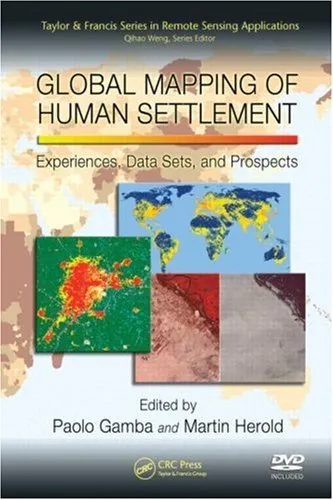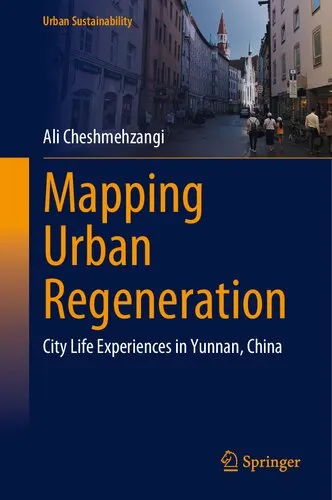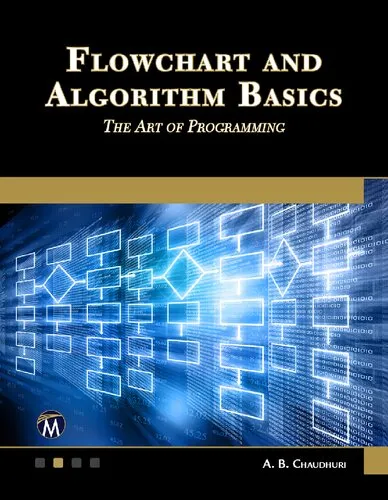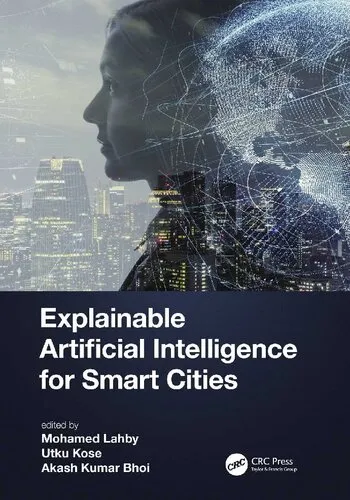Global Mapping of Human Settlement: Experiences, Datasets, and Prospects
4.7
Reviews from our users

You Can Ask your questions from this book's AI after Login
Each download or ask from book AI costs 2 points. To earn more free points, please visit the Points Guide Page and complete some valuable actions.Related Refrences:
Introduction
Welcome to an in-depth exploration of the fascinating subject of global mapping of human settlements. The book "Global Mapping of Human Settlement: Experiences, Datasets, and Prospects" takes readers on a comprehensive journey through the methodologies and advancements in the spatial analysis of human habitation. Authored by seasoned experts Paolo Gamba and Martin Herold, the book provides a robust framework for understanding the complexities of human settlements through innovative mapping techniques.
Detailed Summary of the Book
The book serves as a crucial resource in the field of geoinformatics and urban studies, focusing on the methodologies, datasets, and future prospects of global human settlement mapping. It brings forward meticulous research and insights into remote sensing data and offers a wealth of strategies for effectively utilizing such data in urban planning and disaster management. The authors meticulously compile experiences from various case studies across the globe, depicting a cohesive picture of how human settlements can be documented and analyzed using advanced mapping technologies.
The book is structured to provide readers with an understanding of the different types of datasets available, such as satellite imagery and census data, and their role in building accurate, dependable maps. Additionally, it delves into technological aspects like the use of machine learning algorithms in enhancing the precision of mapping endeavors. The text concludes by projecting future trends and challenges in the field, urging readers to consider the socio-political aspects intertwined with technical advancements.
Key Takeaways
- Comprehensive understanding of global human settlement patterns and related datasets.
- Key methodologies and technologies used in remote sensing and mapping.
- Insights into the integration of machine learning in spatial analysis.
- Challenges and prospects in the field of human settlement mapping.
- Application of mapping in urban planning and disaster risk management.
Famous Quotes from the Book
"To understand our world, we must first accurately map its most critical feature: human habitation."
"The intersection of technology and geography offers unparalleled insights into the human footprint."
Why This Book Matters
This book is vital for academics, researchers, urban planners, and policymakers aiming to glean a nuanced understanding of human settlements. It stands as an essential compendium of knowledge, merging theoretical insights with practical applications in geospatial analysis. By addressing both historical contexts and cutting-edge technologies, the book bridges the gap between traditional mapping approaches and modern innovations like artificial intelligence. It advocates for a proactive approach to issues like urban sprawl, resource management, and climate change adaptations by presenting a clear picture of settlement patterns worldwide.
Furthermore, the book emphasizes the socio-political dimensions of human mapping, stressing the importance of inclusive and equitable urban development. The insights offered pave the way for creating sustainable urban environments and fostering resilient communities, which is an ever-pressing concern in today's rapidly urbanizing world.
Free Direct Download
You Can Download this book after Login
Accessing books through legal platforms and public libraries not only supports the rights of authors and publishers but also contributes to the sustainability of reading culture. Before downloading, please take a moment to consider these options.
Find this book on other platforms:
WorldCat helps you find books in libraries worldwide.
See ratings, reviews, and discussions on Goodreads.
Find and buy rare or used books on AbeBooks.
1477
بازدید4.7
امتیاز0
نظر98%
رضایتReviews:
4.7
Based on 0 users review
Questions & Answers
Ask questions about this book or help others by answering
No questions yet. Be the first to ask!













